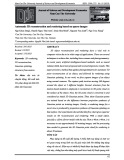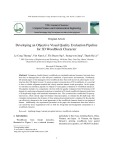
CHAPTER 6:
SYNCHRONIZATION
DR. TRẦN HẢI ANH
Based on the lectures of Assoc. Prof. Hà Quốc Trung

Contents
¨ Clock synchronization
¨ Logical clock
¨ Mutual exclusion
¨ Election algorithm

Synchronization
¨ How process synchronize
¤ Multiple process to not simultaneously access to the
same resources: printers, files
¤ Multiple process are agreed on the ordering of event.
n Ex: message m1 of P is sent after m2 of Q
¨ Synchronization based on actual time
¨ Synchronization by relative ordering

1. Clock Synchronization
¨ Notion of synchronization
¨ Physical Clocks
¨ Global Positioning System
¨ Clock Synchronization Algorithms
¨ Use of Synchronized Clocks

Why do we need it?
Example 1: Programming in DS
¨ When each machine has its own clock, an event that
occurred after another event may nevertheless be
assigned an earlier time.








![Tài liệu giảng dạy Phát triển ý tưởng Trường CĐ Công nghệ TP.HCM [Mới nhất]](https://cdn.tailieu.vn/images/document/thumbnail/2024/20240830/xuanphongdacy04/135x160/1892634747.jpg)

















